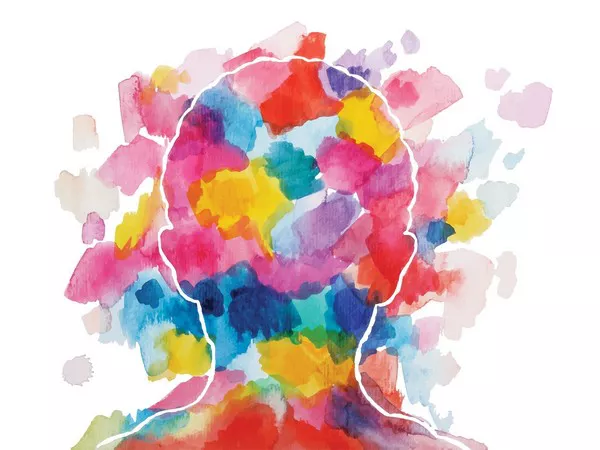Attention-Deficit/Hyperactivity Disorder (ADHD) is a neurodevelopmental disorder that affects individuals’ ability to sustain attention, regulate impulses, and modulate activity levels appropriately. Within the spectrum of ADHD, there are three primary subtypes: predominantly inattentive, predominantly hyperactive-impulsive, and combined presentation. While each subtype presents unique challenges, the hyperactive-impulsive subtype often stands out for its profound impact on individuals’ daily functioning, social interactions, and overall quality of life.
Understanding Hyperactive-Impulsive ADHD
Hyperactive-Impulsive ADHD is characterized by excessive motor activity, impulsivity, and a propensity for restless behavior. Individuals diagnosed with this subtype often struggle with sitting still, waiting their turn, and regulating their impulses. They may frequently interrupt others, act impulsively without considering consequences, and engage in high-risk behaviors.
The Challenges of Hyperactivity
One of the hallmark features of hyperactive-impulsive ADHD is the presence of excessive motor activity. Children with this subtype may appear in constant motion, unable to remain seated or quiet for extended periods. They may fidget, squirm, or run around excessively, making it difficult for them to participate in structured activities or maintain focus in the classroom.
Hyperactivity can significantly impact academic performance, as these individuals may struggle to complete tasks that require sustained attention and concentration. Additionally, their disruptive behavior can interfere with their peers’ learning experiences, leading to social isolation and difficulties forming meaningful relationships.
The Impulsive Nature
Impulsivity is another core feature of hyperactive-impulsive ADHD and can manifest in various ways. Individuals with this subtype may act without thinking, blurting out answers in class, or making impulsive decisions that have negative consequences. Their impulsivity can lead to challenges in academic settings, as they may struggle to follow instructions, organize their thoughts, or complete assignments accurately.
Impulsive behavior can also pose significant risks to individuals’ safety and well-being, as they may engage in reckless activities without considering potential dangers. This impulsivity can strain relationships with family members, peers, and authority figures, as others may perceive them as unpredictable or difficult to manage.
The Impact on Daily Functioning
The symptoms of hyperactive-impulsive ADHD can have a pervasive impact on individuals’ daily functioning across various domains of life. In educational settings, they may experience academic underachievement, frequent disciplinary issues, and strained relationships with teachers and classmates. At home, their restless behavior and impulsivity can create tension within the family dynamic, leading to conflicts and misunderstandings.
Furthermore, individuals with hyperactive-impulsive ADHD often struggle with self-regulation and emotional control, making it challenging for them to manage their emotions effectively. They may experience mood swings, frustration, and difficulty coping with stress, which can exacerbate their symptoms and impair their ability to function optimally in social and academic environments.
Navigating Treatment Options
Effective management of hyperactive-impulsive ADHD requires a comprehensive treatment approach tailored to the individual’s unique needs and challenges. Behavioral interventions, such as cognitive-behavioral therapy and social skills training, can help individuals learn strategies to improve impulse control, regulate their emotions, and manage their behavior more effectively.
In addition to behavioral interventions, medication management may be recommended to alleviate symptoms of hyperactivity and impulsivity. Stimulant medications, such as methylphenidate and amphetamine-based compounds, are commonly prescribed to target core symptoms of ADHD and improve attention, focus, and impulse control.
However, it’s essential to recognize that medication alone is not a panacea for hyperactive-impulsive ADHD. A multimodal treatment approach that combines medication with behavioral therapy, academic accommodations, and support from family and educators is often necessary to address the complex needs of individuals with this subtype.
Challenges and Misconceptions
Despite growing awareness of ADHD, individuals with the hyperactive-impulsive subtype continue to face stigma and misconceptions surrounding their diagnosis. Their behavior may be misinterpreted as willful disobedience or a lack of self-control, rather than recognized as symptoms of a neurodevelopmental disorder.
Moreover, the pervasive stereotypes associated with ADHD, such as the notion that it only affects children or that it is overdiagnosed, can undermine efforts to provide appropriate support and accommodations for individuals with hyperactive-impulsive ADHD. It’s crucial to challenge these misconceptions and advocate for greater understanding and acceptance of neurodiversity.
Conclusion:
Hyperactive-Impulsive ADHD presents unique challenges that can significantly impact individuals’ daily functioning, social interactions, and overall well-being. The excessive motor activity, impulsivity, and difficulty regulating behavior associated with this subtype can pose barriers to academic success, social relationships, and emotional well-being.
However, with early intervention, comprehensive treatment, and support from family, educators, and mental health professionals, individuals with hyperactive-impulsive ADHD can learn to manage their symptoms effectively and thrive in various aspects of life. By fostering greater understanding, acceptance, and support for individuals with ADHD, we can create a more inclusive and supportive environment for neurodiverse individuals to reach their full potential.
FAQs
Q1. When is ADHD at its worst?
ADHD symptoms can vary in intensity over time, but they often peak during childhood and adolescence when academic and social demands are high. However, symptoms can persist into adulthood, sometimes becoming more manageable with age and coping strategies.
Q2. Does ADHD age slower?
There’s no evidence to suggest that individuals with ADHD age slower. ADHD affects people of all ages similarly, although symptoms may manifest differently depending on developmental stages and individual circumstances.
Q3. Do ADHD brains look different?
Research suggests that brains of individuals with ADHD may show structural and functional differences compared to neurotypical brains. These differences often involve regions related to attention, executive functions, and impulse control. However, brain imaging alone cannot diagnose ADHD, as it’s a complex neurodevelopmental disorder with multifaceted causes.
Related topics:


